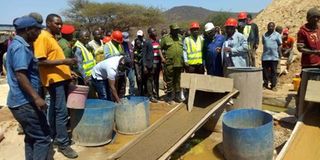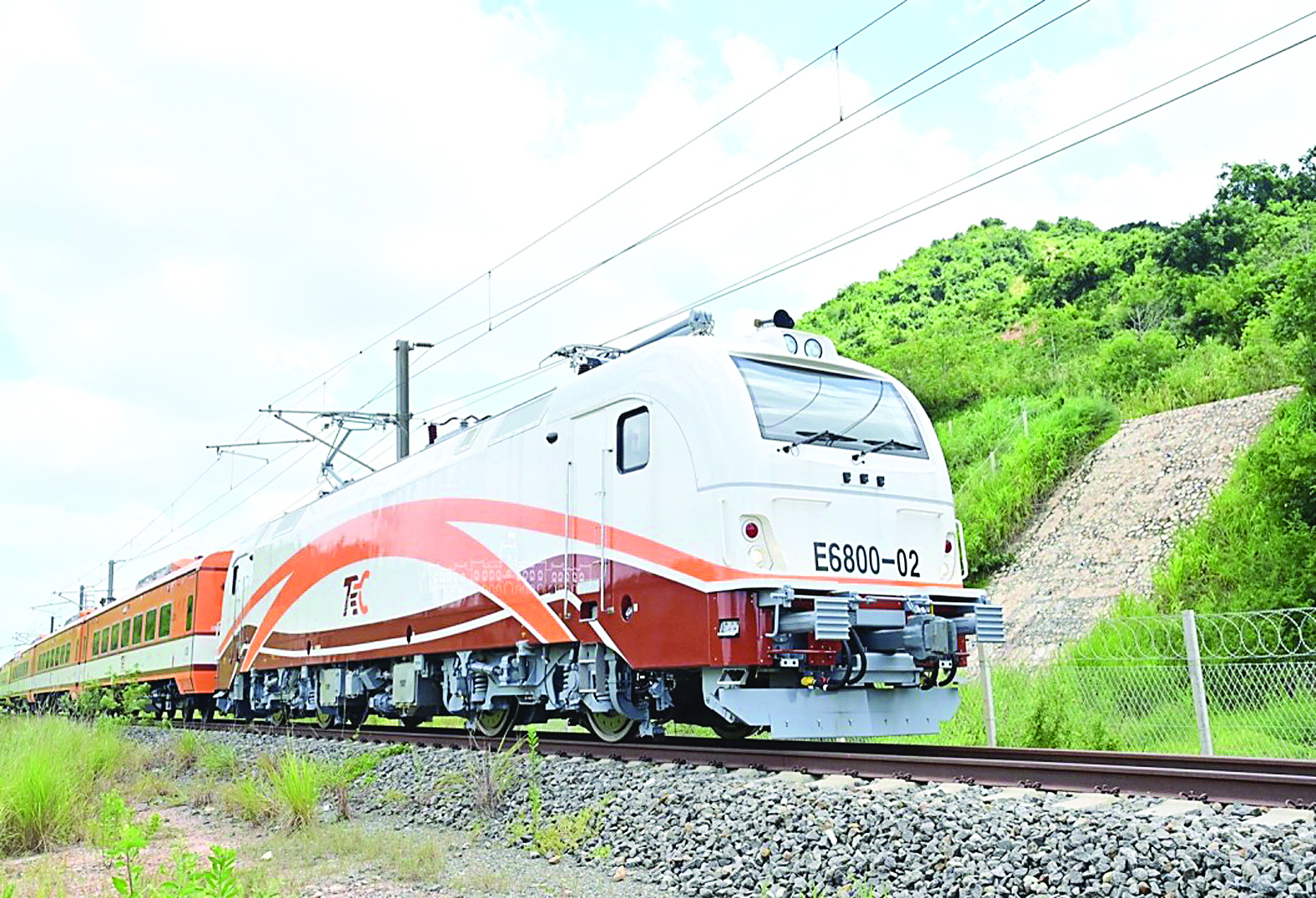Trading centres boost Tanzania’s mining sector

Tanzanian officials at a small-scale mining centre in Karatu District, Arusha. PHOTO | BEATRICE MATERU
What you need to know:
- Government-controlled selling and buying centres are part of President John Magufuli’s drive to optimise mineral trading to benefit not just multinationals but also small-scale miners, brokers and dealers.
- The hubs are part of efforts to improve and provide greater transparency in the country’s mining industry, and to stop mineral smuggling and tax evasion.
When Tanzania made policies that would assure the country gains more from its natural resources, one of the steps it took was the setting up of mineral trading hubs in various regions of the country.
Currently there are 28 operational trading hubs in the mineral-rich areas of Mwanza, Geita, Chunya, Arusha, Namanga, Singida Sekenke, Dar es Salaam, Kahama, Shinyanga, Ruvuma, Katavi, Tanga, Iringa, Manyara, Singida, Shinyanga, Dodoma, Kigoma, Tabora, Mbeya, Mara, Songwe. The EastAfrican visited 10 trading hubs.
These government-controlled selling and buying centres are part of President John Magufuli’s drive to optimise mineral trading to benefit not just multinationals but also small-scale miners, brokers and dealers.
The hubs are part of efforts to improve and provide greater transparency in the country’s mining industry, and to stop mineral smuggling and tax evasion.
EARNINGS
In 2018/19, mining’s contribution to GDP has increased to five per cent, from 4.8 the previous year.
“The presence of these buying centres has bridged the gap between miners and dealers, and now artisanal miners know where to sell their minerals and at what price, since the government sets the minimum allocated prices at the hubs every day,” said Gilliard Lukoya, the mining officer in charge of Shinyanga region.
The mining industry in Tanzania previously focused on companies like Acacia (recently bought by Barrick Gold) and its three mines at Bulyanhulu, Buzwagi and North Mara, the Geita Gold Mine and Williamson Diamonds. Artisanal and small scale miners were ignored and informality, lack of data making support, monitoring or regulation by government made running their businesses difficult.
“Before trading hubs, we were losing revenues from small-scale miners especially for the small gold quantities such as five grammes, 10 grammes or even two grammes since there were no records,” said Jonas Mwano, the resident mineral officer for Dodoma.
Artisanal and small-scale mining provides direct and indirect livelihood for huge numbers of people in Tanzania, yet data was haphazard or not available.
“With the mineral hubs, we are able to collect data of all the market players, from the time licences are issued to production, at the mineral hub and even further,” said Mr Mwano.
The mineral trading hubs also record information of all the miners, brokers and dealers in a particular region. “The information provided and obtained from hubs allows the government and other stakeholders to monitor tax and revenue collections and modify or adapt actions needed for effective business,” said Mr Lukoya.
With time, all information on small scale and middle scale miners will be obtained at the trading hubs and it will make it easier for miners to conduct business with banks, retailers, brokers, jewellers and other traders in a regulated environment.
The gold-rich Geita region was the first region where an international gold trading centre was launched, and it has five buying centres that have made trading easier for small scale miners, reduced transport costs and ensured taxes due to the government are paid.
The buying stations, as cited under the Mining Act 2019, in Geita are located in Katoro, Nyarugusu, Nyakwage, Mbogwe and Bukombe.
“If an artisanal miner gets five grammes or two grammes of gold, to avoid the trouble and costs of travelling all the way from the mine to the market, they could either sell the minerals at the buying stations based on the mines or at the regional market,” said Mr Mapunda.
REVENUES ON THE RISE
From May to July 2019, the government collected around $25 million in royalty and inspection and clearance fees from the Manyara mineral trading hub.
In three months, we recorded twice what we used to get per year. By the end of July, around 4,638 grammes of gold were sold in the market, about $398.7 million.
Prior to the setting up of the mineral hubs, Manyara recorded around 2,000 grammes of gold annually.
On August 10, government revenue for gold, diamond, gemstones and tin sold at the mineral hubs was Tsh16.4 billion ($7.09 million). This was in the form of six per cent royalty and one per cent inspection and clearance fee charged from 2,430,599.25 grammes of gold, 4,959.08 carat of diamond, 21,835.10 carat of gemstones and 19,114.57 kilogrammes of tin collected and sold.
Millions across the country are directly engaged in extracting or processing minerals through methods that require low investment, technology, and mechanisation.
According to the Federation of Miners Association of Tanzania, there are over six million small-scale miners in the country, who in turn have provided jobs for a million more through mining activities.
With such a high number, the primary mining licences ensure that every miner benefits from the centres and a record is kept of all workers at each site.
However, the government cannot apply the same solution to every region as the mineral business is different everywhere.
For the most part, the government has succeeded in tax collection and transparency of the country’s mineral wealth through the hubs, but smuggling is still a problem,
“I wouldn’t expect smuggling to be eliminated entirely, at least not anytime soon,” said a former gemstone miner in Arusha.
According to him, the mineral business in Arusha has deep roots and some dealers even have their offices set up outside the government-controlled hub.
“There is a need to create awareness about the presence of government controlled trading centres. Some people still illegally transport minerals since they are not aware of the proper channels to be followed,” the former miner said.
Before the hubs were set up, regions like Arusha had mineral trading streets. It is difficult to remove the connection between dealers, brokers, miners and workers.
COMPLEX CHAIN
“There is a long and complex chain in the mining business especially here in Arusha. We ensure miners, brokers and dealers keep records of their business and activities so that the government gets its rightful revenue,” said Robert Erick, the resident mineral officer in charge for Arusha
“Miners keep a record of the amount and type of minerals, and the brokers or dealers the minerals were sold to. We also obtain information that we use to train small scale miners to benefit from the business,” he added
Dealers are the final buyers of minerals for a particular region. All trading with dealers is conducted at the mineral market. Small scale miners with primary mining licenses have the exclusive right to sell minerals to either brokers or dealers at the market.
Data from the Central Bank of Tanzania shows that the mining sector makes up more than 50 per cent of the country’s total exports, of which a large part comes from gold.
Tanzania has gold, tin, nickel, iron, copper, zinc, coal, lead, diamonds and uranium, and gemstones like tanzanite, as well as industrial minerals like soda, kaolin, gypsum, phosphate and dimension stones.
***
SMALL SCALE
The classification of large, medium and small-scale mining in Tanzania is based on the amount invested, according to the Mining Act, 2010. If the investment is less than $100,000, it is referred to as a small-scale mine and needs a primary mining licence.
Early this year, parliament approved a Bill to relieve small-scale miners of the burden of paying withholding tax of five per cent and 18 per cent value added tax. This leaves the holders of a primary licence with a seven per cent tax obligation only. Section 55b (i) of the Mining Act states, “Supply of precious metals, gemstones and other precious stones by a small-scale miner at the buying station designated by the Mining Commission under the Mining Act or at the Mineral and Gem House shall be zero-rated.”




